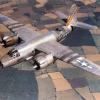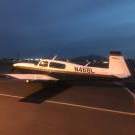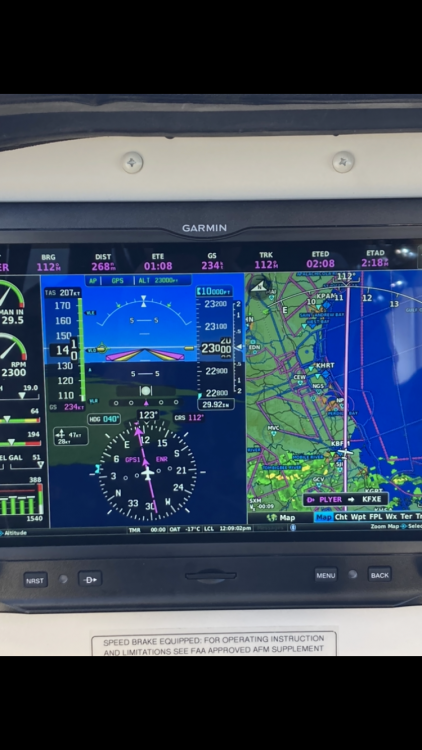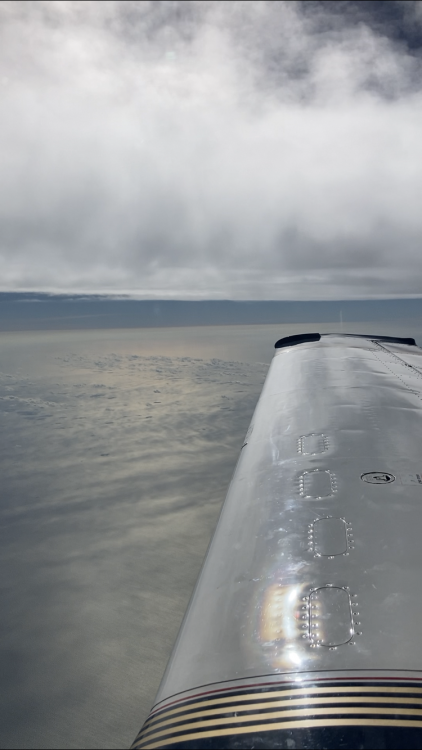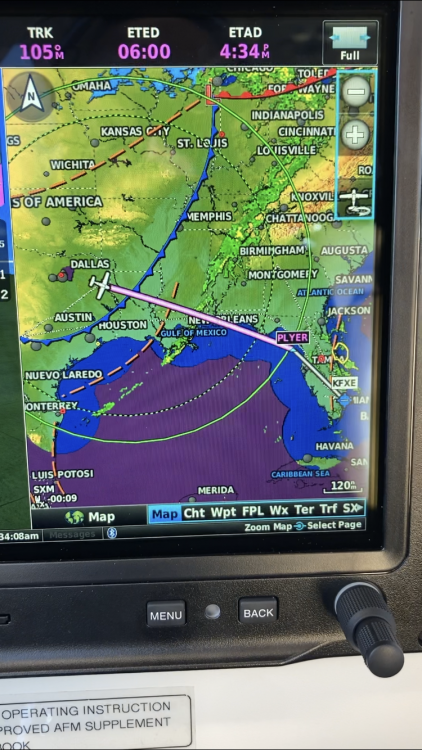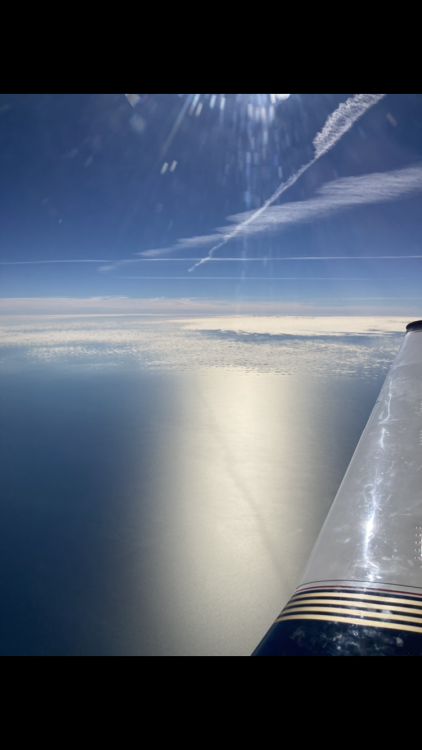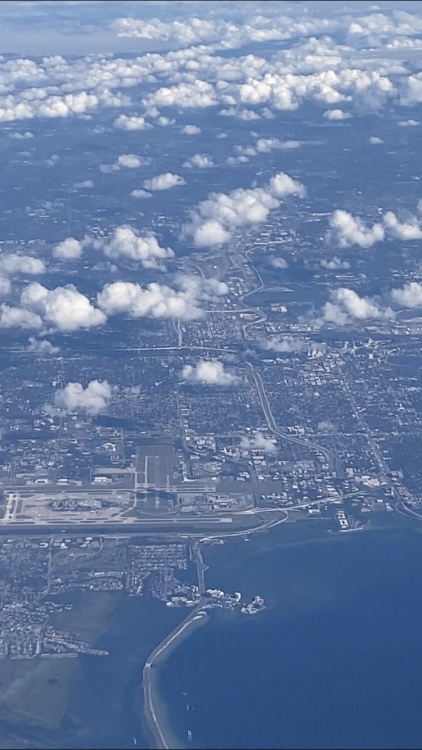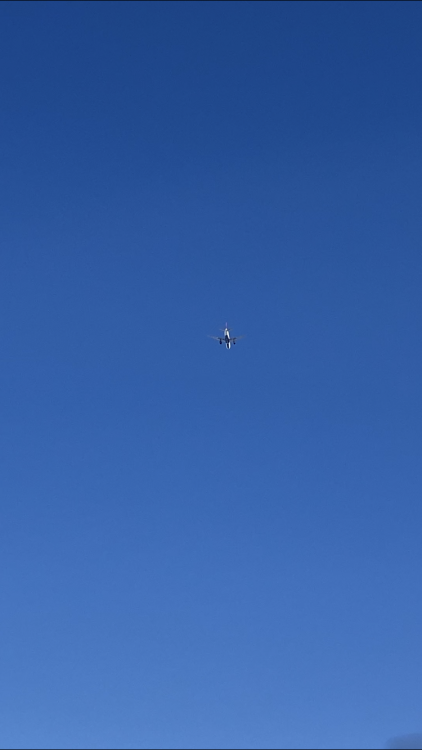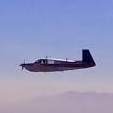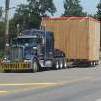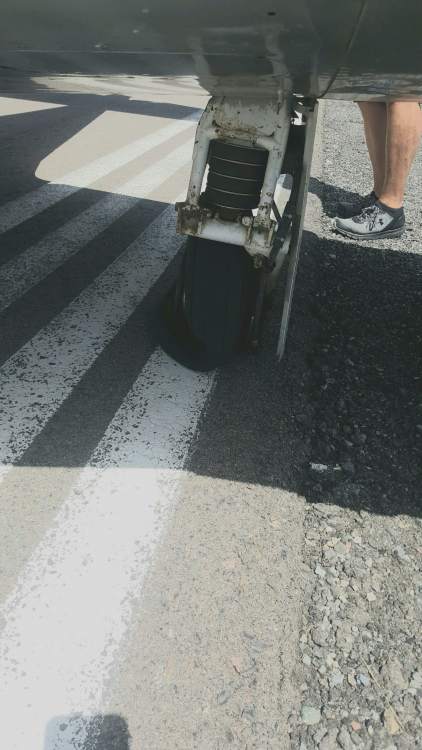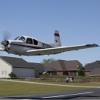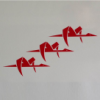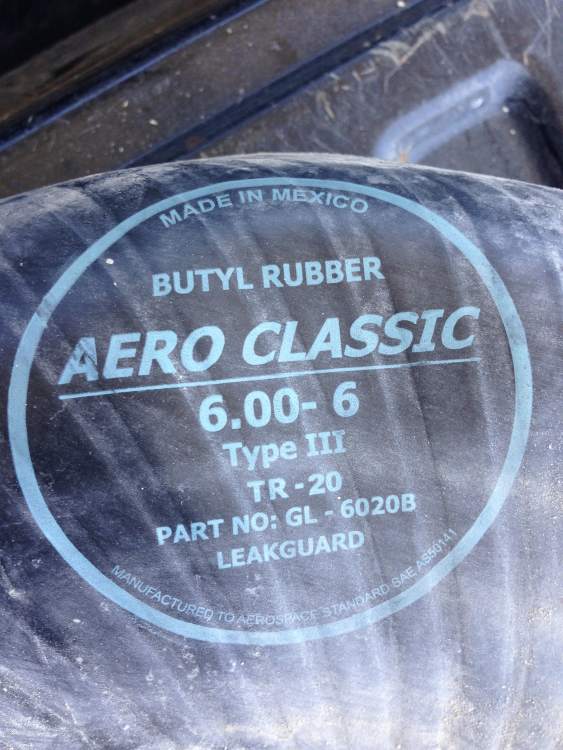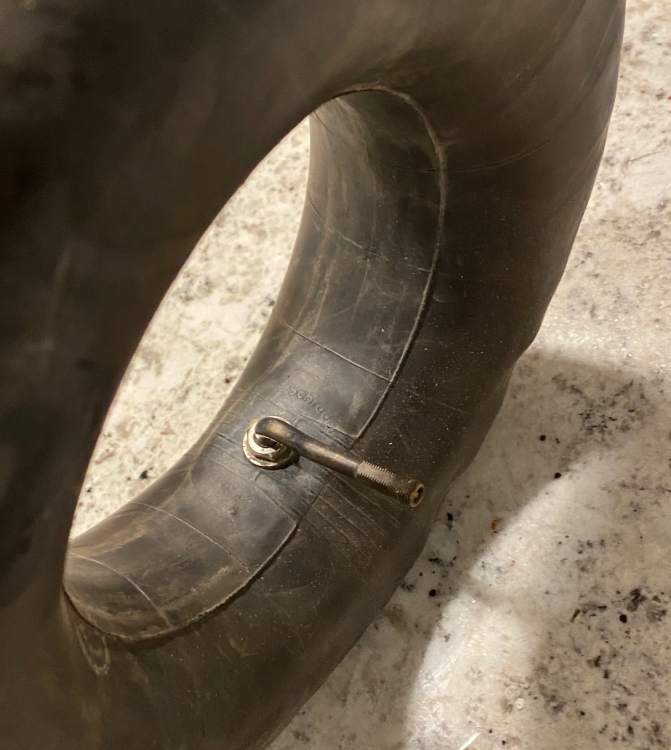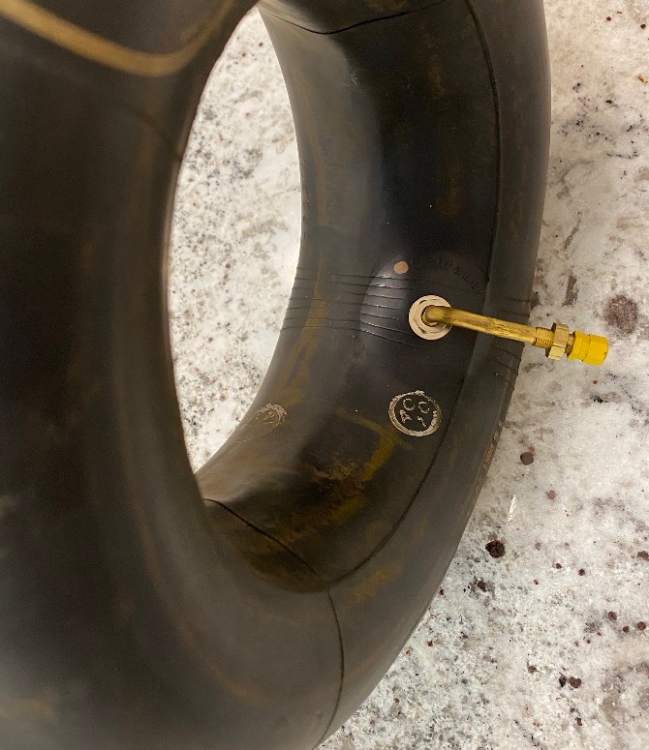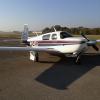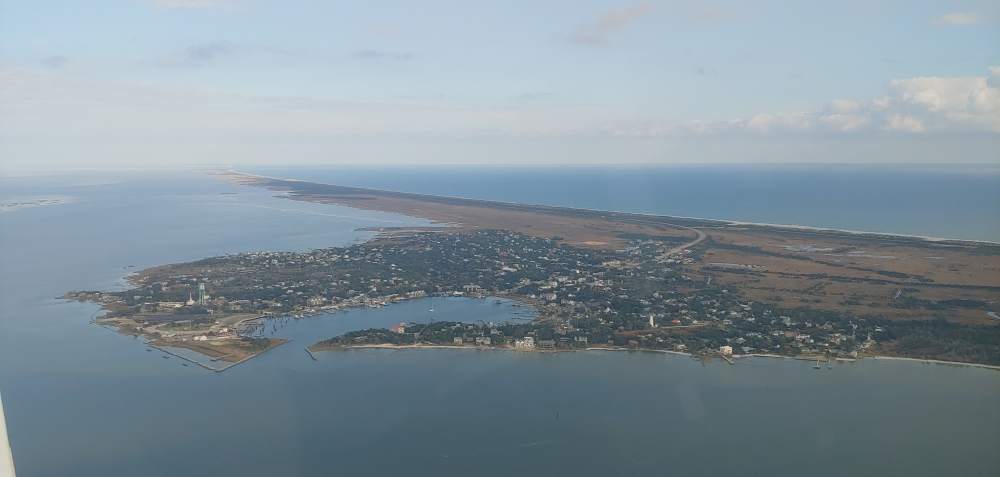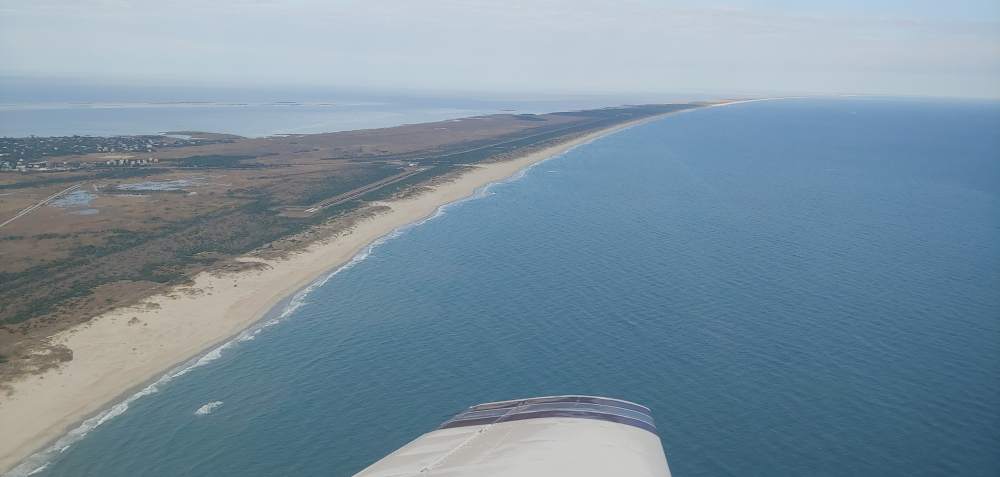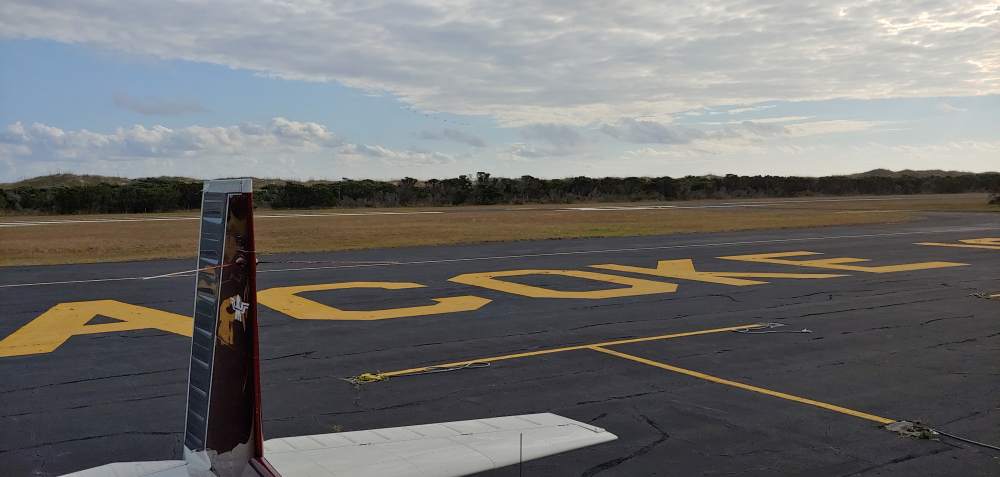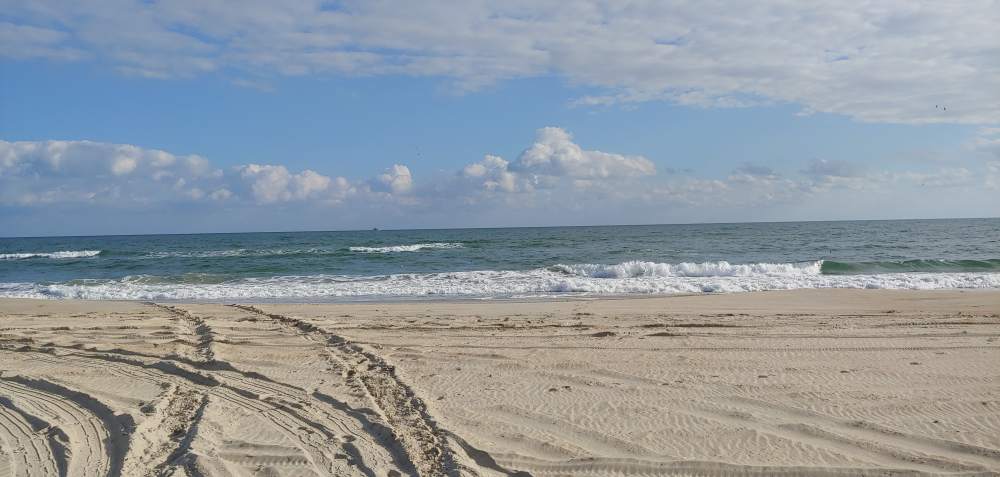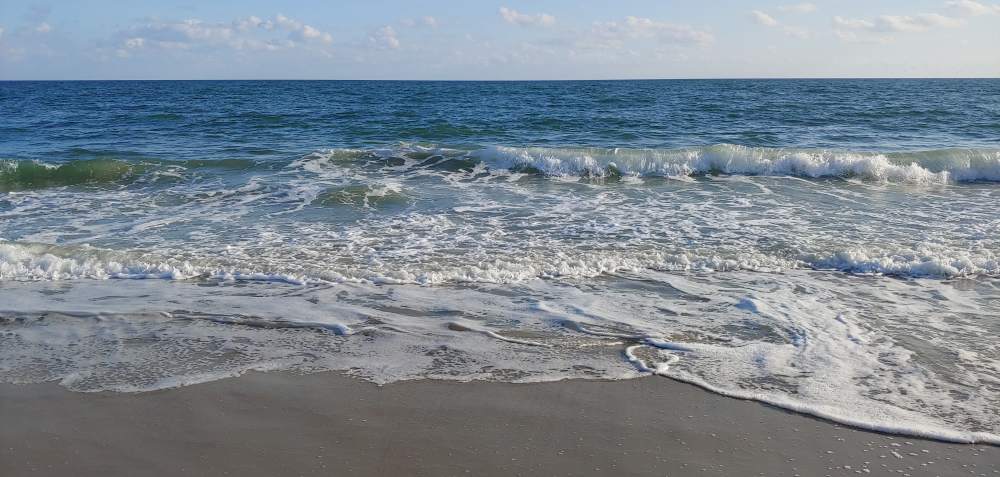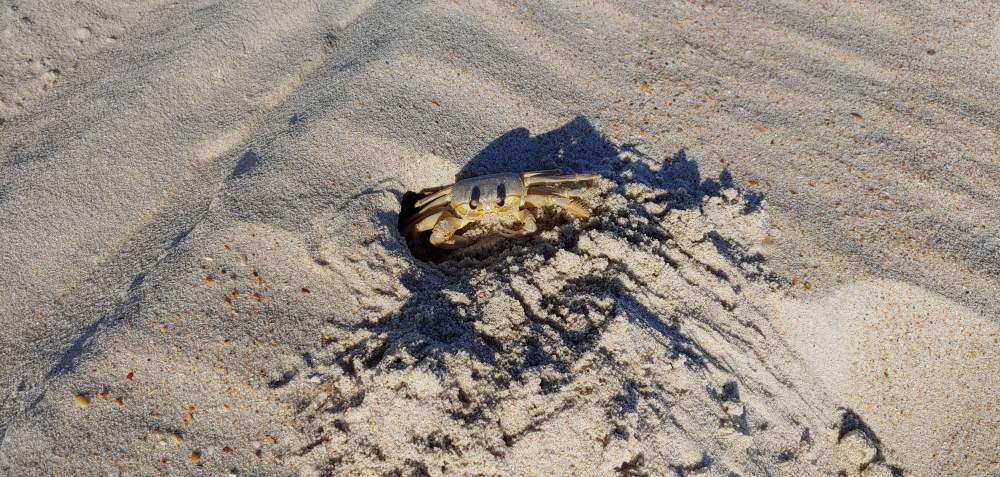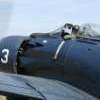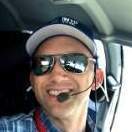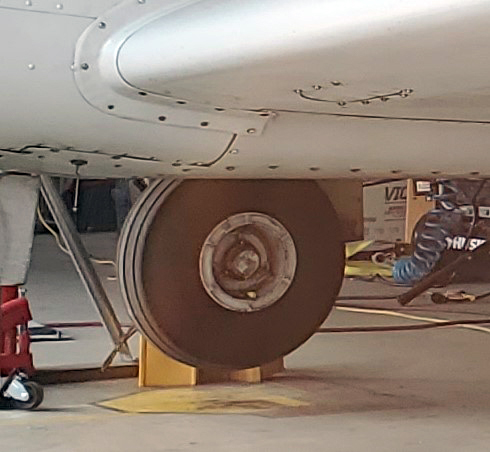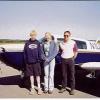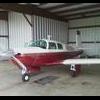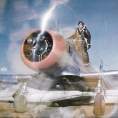Leaderboard
Popular Content
Showing content with the highest reputation on 12/14/2020 in all areas
-
I should have posted this earlier, I suppose. Earlier this year (April) my '65 C got a zero-time Lycoming remanufatured O-360. The excellent shop at Marysville, Ohio did the install. As everyone knows, a zero-time engine has to be broken in, and the first hours are flown near the installation airport at full throttle. So there I was, flying around and around KMRT, which is just northwest of the Ohio State University Airport where I'm based, and it occurred to me, in the immortal words of Doc Brown, "why not do it with a little style?" I knew what I had to do. GO BUCKS!7 points
-
The 3 main areas we are trying to attack are: takeoff, go-around and moose turns (low altitude maneuvering/showing off). These areas are far and away where the vast majority (more than 75%) of fatal accidents occur. Base to final turns account for roughly only 5% of loss of control fatalities. Although I am a fan of spin training, it will not help at pattern altitudes and below. It will help after demonstrating/practicing the first one, when the pilot realizes that although the nose is very low (60-70 degrees nose down), they still need to push to lower the angle of attack. Our research is showing that inadvertent stalls in the pattern (which have a large startle factor) are followed by full aft elevator control all the way to the ground, spin, spiral or straight ahead. We need to get to the pilot BEFORE the departure.5 points
-
Carpets get dirty, worn with use. At Airtex prices, buy a new set every 5 years. I did mine last year and the fit wasn't very good around the center console. Dodd Stretch, owner of Airtex, said he has more patterns for Mooney than any other plane. Seems like every one is different. Make him a paper patter, or mark the carpet for cutting, or cut it yourself and return for rebinding. They are easy to work with.3 points
-
I thought I would revive this thread in case anyone is looking at the Airtex carpets. I ordered a set for my 75F about a month ago. It arrived but the center piece was for a Johnson Bar version. I also noted that the carpets didn't fit quite right. The main reason was that using Bruce Jaeger's Spatial Designs changed the width of the cabin a bit. I called up Airtex and spoke with Mark. He said if I could make paper cutouts of the carpeted areas in my plane, they would make up a new set. After sending them the cutouts, they made a new set for me. They fit perfect. What they didn't do was cutout the fuel selector or floor gear indicator. I think the reason they didn't do this is because there will always be a little bit of play in the placement of the rug. The rug isn't that hard to cut and allowing me to cut it myself allowed a more accurate fit. As for the quality of the rugs. I got samples from SCS. The quality of the AirTex are the same quality as SCS's "featherweight" version. Airtex include the Ensolite foam backing at no charge and it costs $289+shipping. SCS equivalent is $495.50 (added the Ensolite backing to make it apples to apples). I looked at the wool version but my outer Cheap Bastard couldn't see paying $1820 for rugs. We will see how well they wear...3 points
-
I caught some nice headwinds at FL230 on the way from GGG to FXE on Saturday. It was a nice 4:00 flight which probably beat commercial by about 4:00 door to door if I had to change planes in Dallas. The last pic is me getting passed by Delta on the FORTL7 arrival to FXE. They always insist I fly the arrival when coming in from a higher altitude but usually approve my request to go direct destination when I’m halfway down. It must have been a rookie controller because he denied my request even when at 6k feet. When I saw the delta jet coming up on my 6 less than 2k above me and descending on the same arrival I told him I didn’t feel like flying through their wake. I heard a voice in the background say “tell him to turn 20 to the left!” I finally was able to get direct.3 points
-
Definitely on board with the 70 degree stem. Much less expensive and maybe even easier to service than the 90 degree. Hey takair, when you get the tubes, please post some photos of them before and after the install !3 points
-
I would NOT recommend this procedure, but I am also the idiot (I forget the word he used) that makes the AFM/POHs that are there to guaranty (or state the way we got those performance numbers). But, I also don't agree with Dr. Rogers all the time either (gasp!). @PT20JThere are sooooooo many factors that determine VR and the "best" way to climb out. VX is the number to fly to clear an obstacle in your path (at the exact end of the runway surface. VY is the number to fly to get to altitude in the quickest amount of time. The engine will remain below redline temperatures during a VX climb to maximum altitude; it's required by regulation. In Alaska, airplanes are allowed to fly 15% over gross weight, which is not allowed in the Lower 48. There are so many places to land in Alaska, which changes the equations a lot. Funny side note. When the Citation X was only a new prototype, we brought in a private T-38 for chase. We quickly learned that the climb schedules were significantly different (climb rates are actually close). The problem was that at Citation X climb speeds, the T-38 had to fly S-curves behind it. Then we got the brilliant idea (sarcasm is gushing out of me) to fly the formation climb at T-38 speeds. We BARELY cleared the Wal-Mart a mile off the end of the runway. I would much rather be 2,000 feet above the runway at V2 than 300 knots and 30' above Wal-Mart. But then, we both had two engines As for what to do after an engine failure on takeoff (or anywhere for that matter), plan the flight; fly the plan. Airplane or sailplane, every airport, all environmental conditions, my capabilities, etc., I plan my decision altitudes as to where I am going to put the airplane/sailplane if X happens when ... before I push the throttle up or give the take up slack signal. Bottom Line: and as @carusoam stated, DON'T STALL. Odds of survivability go up significantly.3 points
-
An LED landing light is almost a must these days. I got tired of having the radios and everything else dim when I switched on my old halogen landing light. An LED landing light is easily twice as bright as a halogen, the light is pure white, and it won't fail when you need it most. The life expectancy and low amperage of an LED landing light means that I can fly (in congested areas for example) with the landing light always on. They're well worth the price differential.3 points
-
Order the data CD from the FAA for your airplane and you'll get all of the 337s/STCs that have been filed for it in case it's just missing in your records.3 points
-
Open dipstick immediately after shut down every flight and let it all breath out while you put put it in the hangar and all. I don’t close mine until steam stops coming out.3 points
-
That’s what Dan Gryder talks about, specifically on takeoff. It *sounds* ridiculous that so many people would pull rather than push in a low altitude stall, but, at least according to him, the predominant reaction is pull.3 points
-
OMG! Thanks,@takair, for the ping. Of course I have thoughts . For those on this thread that haven't read my 7 articles in "The Mooney Flyer", you need to. They only touch the tip of the iceberg on these topics, but I'm here to further expand on any of them. I'll learn from you, too. 1) Laminar flow is for wind tunnels and CFD. There is very little of it in the real world. Sailplanes are a good exception, but they scrape bugs off the leading edge that got there during the takeoff and tow to 1-2K feet. Laminar flow has little to do with stall speeds except possibly increasing stall speeds. Ask Dick Rutan about that. 2) @PetehdgsPlease do not confuse Cl with CL. Section lift coefficient (Cl) has little to nothing to do with wing lift coefficient (CL) and the associated stall characteristics. Most certificated airplanes have 2D Cl versus alpha (aoa) curves that show an abrupt stall break ... including Mooney ... and Cessna aircraft, but that is not relevant for a 3D wing design. Planform, twist, etc. are used to control stall progression. Your mention of an abrupt stall break (nose down pitching moment) is good, a goal of designers. The other (like you mentioned) is that the wings have to be kept +/- 15 degrees in roll. The last requirement can't be accomplished analytically because there are so many other factors that influence it (inertia being the largest item). 3) VGs add drag. Those that say that they don't don't have instrumentation accurate enough to measure it. 4) Yes, VGs can lower stall speeds (I have not personally tested an M20 ... except for tufting and airplane ... which are little VGs). Certification testing alone (if done with an FAA ACO that actually makes the applicant meet the regulations) will cost more than one can ever think about making on selling them ... and VGs are really, really inexpensive. 5) The Mooney TKS installation is a scab on over the base airfoil. It modifies the airfoil significantly. Airfoil designers look at 0.010" as significant; TKS is closer to 0.250". 6) Do I personally think that a modified airfoil (drooped leading edge, larger leading edge radius, etc.) would be a good idea? If your sole purpose is to lower stall speed. Yes. Plan on losing top end speed. Plan on a very, very expensive certification program ... if done properly, probably including a spin program. Is that $3M recoverable in sales? 7) Flying below 1.3 on approach will shorten the landing distance (both in air and ground roll), but it is relying on your engine to continue running and will make go-arounds significantly more difficult. BTW, that is the scenario that is the #1 fatal accident cause for the last several decades. 8) Most certificated GA airplanes do not stall at forward CGs. They will develop a significant sink rate, though. Okay, way more than my 2 cents worth. But I hope we all learn a little from this thread. Knowledgeable and proficient pilots are typically safer pilots. Blue on Top, Ron PS. Fire away.3 points
-
It sounds like an interesting project. Please keep us posted on your progress. If no one ever tried out their ideas, we would never learn anything. Skip2 points
-
It might just be you aren’t leaning enough on the ground.2 points
-
2 points
-
He’s an extremely meticulous Mooney mechanic who used to run the factory service center. Very nice guy and if you take your Mooney to him no stone will be left unturned. Some people like this, some not so much (leave with more Mooney and less money).2 points
-
I have flown and stalled N242PT, SN 33-0005 which had both TKS and VG's. While I didnt do any high altitude Cruise speed tests, my Mark I sphincter gauge says it was a tad slower in cruise than other Ultra Acclaims, especially N218TA SN 33-0012. It also stalled lower at NEAR gross weight than the others, (maybe 100 under) at 52Kts. I wish I could have had more time to really see what the cruise penalties of these 2 mods added to, but the bennies of the stall reduction and FIKI were well worth it for the mission this plane was to take on. Perhaps now that it is back in the States Ill get my chance soon. Granted, this was not an instrumented test flight, but a real world experience.2 points
-
I had a similar experience was lucky I didn't ruin my rim or anything. Used every bit of the runway width wise. I had to use straight valve to get back in the air but ordered 70° and have been happy ever since. Pics are of how close I came to going off edge of runway and my valve stem I found doing a FOD check riding back with the airport ops guy. I did check my tire pressure before the 3 hour flight. If I remember correctly the tires/tube were installed a little over 2 years prior to me buying the plane. I make sure to use alot of talc powder. Wont hurt anything.2 points
-
Just to be clear: I don’t fly the 201 the same way I flew the draggy Beaver on floats. But, I don’t spend a lot of time at Vx or Vy in the Mooney either. I start the takeoff roll with TO flaps and some back pressure and let the nose start up when it’s ready. After lift off, I reduce the back pressure to hold about 10 deg pitch until clear of obstacles and passing 86 KIAS (Vy) at which point I raise the flaps and lower the nose to about 7.5 deg and accelerate to a Vz climb. I use 2700 rpm and WOT for the entire climb. I’m interested to learn how others do it. Skip2 points
-
70deg on order. It looks like the stem may be slightly shorter than the 90 as well. Will post pics. Fingers crossed.2 points
-
OK... You inspired me to do some reading... When spec-ing the tire tube... we get options... 1) Rubber type... butyl is the one that holds the air forever... (nearly) 2) Valve stem... often 0 or 90° same name, just confusing... 70° is a slight offset... good for not bumping into the hub. 3) Valve stem material... as Bob posted the bent metal stem... 4) TR seems to be the valve stem spec... but no chart to say what all the options can be... 5) There is also a bunch of valves themselves to consider, but I didn’t find those details... Often the word valve and valve stem get blended together... when one is inside of the other... I used https://shop.desser.com/ecomm-collections/aero-classic-3470/e/collection/ Bbest regards, -a-2 points
-
These did not work out well in my ‘63 C. New tires and tubes, but the tubes only lasted a few flights. As least it went flat in the hangar, not on the runway. The other main was still holding air, but upon disassembly, that stem was separating at the base, just like the other side. Neither main tire were under inflated. I don’t remember what make tube was previously installed, but they were straight-stem and were fine until the tires wore out. I just picked the wrong manufacturer. I replaced both main tubes with 90 degree stems. It took a little finesse to get the stem through the hole, but once it’s in, no issues. The stems are quite long, so if you have a hub cap it will interfere. As an added safety measure, I always remove the valve core from the stem before loosening the axle nut. Don’t want QA to give me a DSV.2 points
-
2 points
-
+1 for the CD. I always order them for any airplane I am considering buying. Had CD for five different J’s before I bought the one I have now. I consider it a mandatory step in the buying process.2 points
-
TR-87 is the 70 degree. https://www.aircraftspruce.com/catalog/lgpages/aero_06-03303.php I’m thinking I will go with your suggestion.2 points
-
It's a small design flaw in early Mooneys that straight-stem main tubes in WILL eventually fail because the stem is pushed slightly off to one side, placing a constant stress on the rubber, leading to failure at some point. This is true for properly installed and properly inflated tubes, even if you remove the valve stem cap and even if you remove the bearing cover. (See photo.) In the years I've owned my '65 C, I had three such failures (all on landings). I finally bought bent-stem tubes. They cost twice as much, but that has solved the problem once and for all. The manufacturer spec sheet and the Aircraft Spruce listing for tube are in the photos below. There are, however, a couple of CB solutions I tried in the past that did work; no failures but I decided they weren't really kosher: 1. I found bent-rim snowmobile tubes of the same exact size at a fraction of the price and installed them. The problem was that they rendered my aircraft non-airworthy. Turned out that non-aviation tubes are MUCH thinner than aviation tubes and aren't designed for the sudden rotation when the tire makes contact with the runway. Bad idea, but they worked for more than two years until my A&P noticed. 2. A truly effective CB solution is to wrap a bunch of twine around the base of the valve stem before installing the tube. The idea is to use the twine as a spacer, preventing the valve stem from fully protruding out of the hole. All you need is about 1/4" reduction in valve stem height. It actually does work. But I figured, this is one of those situations where, "if you can afford the aircraft, you can afford decent tubes." Especially since proper-spec bent-stem tubes will last for many years.2 points
-
Thinking this reaction sounds ridiculous is, I think, EXACTLY the insidious reasoning that is responsible for why it IS the predominant reaction! Low altitude, unexpected stall, ground rushing up,....2 points
-
2 points
-
The last I heard was that GenesysAerosystems needed 10 (or was it 20?) non-refundable deposits before the Mooney STC work could begin. According to Barry, who previously posed here on behalf of Genesys, they never got the the required deposits for the POs, so that was that for Mooney. I think there’s another thread somewhere. Mooney is not in any queue! None! Zip! Nada! Never! Ever! I’m so frustrated with lack of a digital A/P for my Aspen/Avidyne combo, I’m this close to starting over!! What say you Aspen? Avidyne?! How about a “GFC500” -equivalent for us?? Grrrrr!!2 points
-
Just another reason I don't bother with Tapatalk. I just fire up Chrome and scroll to the Mooneyspace tab (or type "m" and pick from the list). Since I never sign out, I never have to sign in, which is the reason many give for using Tapatalk (before they start complaining out how it functions . . . . ).2 points
-
Watch enough YouTube, and you see Chris show up in his other work clothes... Then there was what looked like a bunch of farm animals too... a gaggle of geese, ducks, hens..? 6-7 get out and feed some animals... 7-8 get to job1.... 8-9 plan to get some flying in... 10-11 edit some video... 11-12 Get to job2... 12-1 Fly some, with somebody that you organized days before... 1-2 work on setting up that new piece of avionics... 2-3 Check in with Dynon... see where that AP is for the M20C... 3-4 lunch time... 4-5 change some oil out of a machine... 5-6 check in at MS... 6-7 Clean a part of a machine... 7-8 organize some community activity... 8-9 organize the next day... This is what a typical day for Chris looks like from the outside... extremely busy... Best regards, -a-2 points
-
Yesterday, taking advantage of some nice weather on both ends and following up on something I've wanted to do all year, but haven't because of COVID, weather, extended annual inspection, weather again, etc., I flew to the Outer Banks. Cutting back on speed in favor of endurance, I made a 6.9 hour round trip to Ocracoke Island. Nearly seven hours of flying for a two-hour walk on the beach sounds like it might not be worth it, but hey, it's 2020! My parents used to take us to Ocracoke every year for summer vacation. I have so many great memories of the place. I didn't have enough time to get into town because I left later than I intended, but the beach walk was worth it. Here's to getting back to more normal times, hopefully soon!2 points
-
As a preamble, like many of you, I am sorry for what happens to Brittain industries, the worst is the lack of information and the hypothetical hope for a better future. I have a deep respect for Cecilia and the team trying to get back up the slope, so I wouldn't want to hurt their efforts. However, I have the will to return my 20 F to its strict original condition, as this is enough for the exploitation I envision and the technical solutions used by Mooney at the time are proven, so there is nothing to change. There are many parts whose supply is difficult, you talk about the servo drop-down membranes (this is the exact name in French, at home it is called "Rolling membrane"), but there is also the air inlet bellows, that of the depth trim, the interior plastics,... In France with my " F " I'am alone in the world, clone to Tom Hanks on his island. There were only 4 "F" from before 1974 imported to us, the others are "E" or "J". The only "B" that flies from us is a "collector". I work for the machine tool industry, I am quite well equipped in industrial means and I have many partners and suppliers specialized in their field. Naturally, so I studied these rare parts and considered what is the simplest for me : remanufacturing. To answer your question, Brittain membranes are a specific manufacture that goes a little beyond the industrial standard. By this I mean that the stroke /diameter ratio is particularly important. If you look at the servo step, you will see a diameter of 4"(102 mm) for a stroke of 8" 3/16 (208 mm), which is a deployment ratio greater than 2. For the running board, part of the run is done without load traction, this to organize the winding of the membrane without stress. As for the actuators of the "PC" (in wing and the tail cône), the ratio is less. In the industrial field, the leader of this technology is "Marsh Bellofram". This supplier's catalog shows that what it does best is Class 2 giving a ratio of 1.12... This peculiarity explains that our membranes are made of rubber without reinforcing fabric, that the thickness is tiny, to age better, to be more flexible and that this thickness varies in some places to "organize" the winding. Brittain's chosen material is "Nitrile", a synthetic rubber. Today, silicone makes it possible to achieve the same performance, and it is simpler to implement. With a friend who specializes in contact molding, I made tools and we remanufactured several silicone diaphragms, identical to Brittain's. For the running board, it's ok, for the wing actuators, there is a small test bench or an actuator pulls a spring, we perform at this time and for 1 year fatigue tests, a small automate drive a solenoid valve, which simulates a flight of 5 hours per day with alternating stresses. the membrane is currently at 530,000 cycles, it is not yet torn. This is my situation today, I have to consider the possibility of mounting these parts on my " F " with approval from the authority, this to keep my ICAO CDN. Currently, only the membrane of my running board was damaged, the servos of the PC system were in very good condition, but I have to project myself into the future. In the coming weeks I would put the plans of the diaphragms in the Download section, but I will seek approval from Brittain's owner.2 points
-
These are the ones that were put on my plane a couple years ago. They have the 90° angle stem. The Goodyears are the only ones that Aircraft Spruce had at the time that were 90°. The description is weird because it has A and B in it, but the AS number is the 06-05305. https://www.aircraftspruce.com/catalog/lgpages/gy_tire66.php I don't have any good pictures on my computer but was able to find this one and crop it down. The stem does not stick out past the wheel.1 point
-
Yes, I got a 337, but no, a seasoned IA cannot legally duplicate the 337 as the 337 refers to a print of the modified part which is exclusively to my tail number. It will require a new print showing the holes specifically for your airplane. I did find the example I worked from here on Mooneyspace, somebody did the modification to an E model. I also used the same DER. Somebody mentioned that they were 6'3" with a 34 inch inseam. That is exactly my dimensions. Not too hefty, but other dimensions and mass will remain classified. The modifications were pricy, however the comfort is priceless.1 point
-
Aero Comfort will only provide a boot that is tall, and risks a considerable amount of material be be between the upright Johnson bar and the wheel well cover. This is not want you want as the most important function of the Johnson Bar is to put the gear DOWN. You want to have nothing between the upright bar and the wheel-well, otherwise you will risk not being able to put the gear down. The Factory produced a Johnson bar boot that is essentially flat, but with appropriately placed darts to allow the hole in the material to be immediately adjacent to the pivot point, which is below the floor. There should be some stretch, but the fabrication of the boot should not rely on the stretch of the material much. I should be as wrinkle free as possible. I am changing my boot now as the original one was made of Euroleather and was ripped and worn. I have some stretchy leather which I think will be more durable. The factory used a plastic-like backing, I think to guard against CO. I am not using that as I am trying to make this as simple and as thin as possible, without resorting to crappy materials. John Breda1 point
-
I checked with both Brian Kendrick and Bob Minnis on this. These are perfectly normal temps. You’re ok as long as they don’t get below 250 in cruise for any length of time. During extreme cold weather ops, you’ll likely see them going below that briefly on approach and landing, but they’ll typically warm up again prior to shutdown due to the tight cowling.1 point
-
For sure.... you’re not alone... At MS, your never alone... even in the middle of the night... But, you and all your flying friends are nuts... The POH for the O is pretty good... At 300 plus pages or so, it covers LOP in a few columns of the power chart... just a hint of what is available to you... it is hidden with the standard words ‘best power’ and ‘best something else...’ It is really helpful to get the insight of the APS guys, and the engine knowledge of the Savvy guys... For the coolest insight of operating the IO550, speaking with Bob Minnis Author of the 310hp STC is really cool... @StevenL757 is often in contact with Bob... I spoke with Bob when OHing my engine... My friend @Cris recommended the conversation after I flew his Screamin’ Eagle... Man time flys at Mooney speeds... PP thoughts only, not a mechanic... Best regards, -a-1 point
-
The straight stem on the mains also seems wrong to me. The last couple flats I've had have been the stem getting torqued and failing where the stem meets the tube. And the tires were not underinflated!! I am very interested in what you figure out takair.1 point
-
Walked into my hangar Friday afternoon and noticed the Mooney wasn’t sitting right, went around the Cessna just to see the right main was flat. Aircraft is down for annual for the past month, hadn’t moved. Valve stem was pulled out of the tube, same issue as OP, stem is in a bind as it comes out of the wheel, you have to bend it even more to add air or check pressure..... PITA1 point
-
Look forward to flying to your area SOON @amillet My sister just moved into her new home over looking the Puget Sound. I will be visiting her in the next 6-9 months! Tom1 point
-
In the EASA space, the pilot-owner status of a normal category CDN does not provide for the installation of non-PMA parts (it is possible under "CDNR" (collector aircraft)). For my own machine, I am therefore forced to have the replacement part approved by the authority. The other alternative is to mount the part, then have the installation tested by an approved structure avionic that will issue a release certificate for the entire installation. As it stands, I am simply considering providing myself with replacement membranes and being able to keep my PC system in flight even if Brittain disappears. I think Brittain could have engaged in the process of manufacturing silicone membranes without problems, because it is not very expensive as an investment. In addition, the molding of nitrile has also been simplified. With slightly larger volumes, it was possible to do too. So my current thinking is that Brittain is not looking for suppliers. But I can be wrong. In the Mooney community, can we already know how many would be interested in membranes ? My 67F doesn't have the Brittain group III option, just the group I without the "hold altitude" function. But the manufacture of a tooling is easy, if you have a model membrane to make the plans, it is possible to follow the same approach for this part.1 point
-
When I had my F Mooney, it had one of those. It quit. I disassembled it to the last part an fixed it up. It worked great after that. I love fixing up old pieces of machinery.1 point
-
never give up...! until your fix is more complex and expensive than a brand new device.... Since the grinder has to supply power from the fixed parts to the Rotating parts... Expect that there could be a piece of dirt on the sliding contact... While you are in there, be prepared to clean out the old grease rocks and supply it with new grease rocks... My museum collection still has a coffee grinder in it if interested... Best regards, -a-1 point
-
1 point
-
You should do this once in the air, too--it's not the same as on jacks in the hangar. Have another pilot or CFI along when you do, and don't forget to fold the handle and disconnect it before pushing the breaker back in!1 point
-
Yeah, that was me, too. The CFI thought it was funny (it had happened to him, too).1 point
-
Great thread about updating checklists... 1) Emergency gear: Disengaged. The Long bodies have this same challenge... the mechanical switch for the emergency gear never gets operated... But... once in a blue moon something activates it... the cost can be a torn up cog and no way to extend the landing gear... So... it is that important to make sure on every flight... touch the device, claim its position... laugh out loud... say check! As PIC... you are the big dog in charge... no matter how good the mechanic is that left it in the wrong position... They should know better. You should know better. But, your safety is on the line... Landing gear is very powerful... Update the checklist and execute it... Next steps... get back on the horse... hello, mr. mechanic? I got a favor to ask... I’d like to get my plane back up on the jacks... to review the operation and stowage of the e gear... got time for me? It helps to have really good interpersonal skills... better than my writing skills... PP thoughts only, not a CFI... or mechanic... Best regards, -a-1 point
-
The Mooney mission is economical high-speed cruise. It's not designed to be a STOL aircraft. It's not clear to me that the wing change would solve any real-world problem. Landing distance is related to stall speed. Mooney stall speed is similar to other airplanes in it's class, and a 2000' strip should not be a problem. Unless I misunderstand, the proposed wing change seems aimed at producing a less abrupt stall break rather than a reduction in stall speed. That won't help you land shorter unless you reduce approach speed to say 1.1 Vso feeling that you have more margin because the stall is "softer." But, a stall close to the ground -- regardless of airfoil shape -- will still kill you if there is not enough altitude to recover from the high sink rate produced. There is no doubt that modern CFD design techniques can produce superior airfoils. However, retrofitting already built aircraft is not a minor engineering undertaking, so there has to be a significant benefit. The vortex generators are inexpensive and proven and would probably be a much simpler way to go. As far as the laminar drag bucket -- I seriously doubt you will find that on a Mooney. The NACA wind tunnel data is for 2D airfoils that were polished very smooth. A 3D wing has manufacturing imperfections in the shape that probably prevent any significant laminar flow. As to whether or not vortex generators cause extra drag at cruise, here's a paper on that: Vgs_cruise_wide_screen.pdf Skip1 point
-
You are correct. One would wonder about their CME, especially given the statements they are making. The Pediatrician noted in the video I posted is more up to date than the Federal Air Surgeon. My wife is a medical credentialer and when she started looking up the credentials of some of the "famous" doctors who are on the front of this virus, one's you see on TV regularly their CME, and boards are desperately wanting. Worse, is the CDC. If you think about it logically, as you intimated "federal job". In reality why would a really good board certified specialist work at the CDC for a couple hundred grand a year?1 point




.thumb.jpg.bc34f5b8e7316198dd6fe1842d52fced.jpg)

